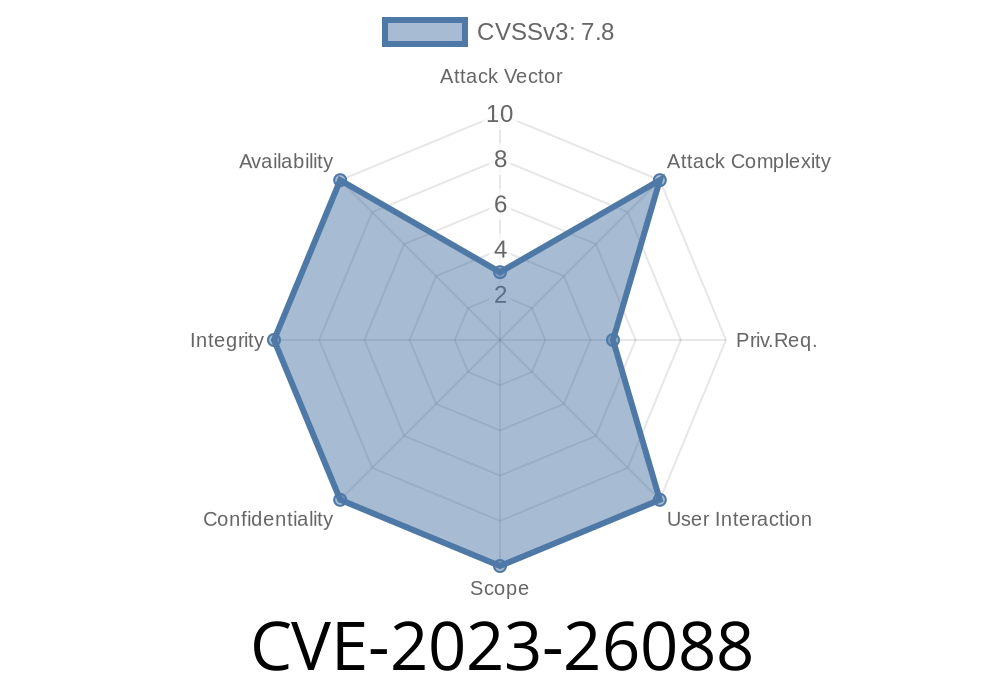In this post, we will discuss a newly discovered vulnerability (CVE-2023-26088) in Malwarebytes Anti-Malware software, specifically affecting versions prior to 4.5.23. The vulnerability lies in how the quarantine system of Malwarebytes handles symbolic links, which may potentially be exploited by an attacker to delete arbitrary files on the system or gain escalated privileges under certain scenarios. The post includes a code snippet demonstrating the exploitation, links to original references, and an in-depth discussion of the exploit details.
Description
An issue was discovered in Malwarebytes Anti-Malware software before version 4.5.23 that revolves around the improper handling of symbolic links in the quarantine system. By crafting a malicious symlink and exploiting the quarantine system, it is possible to delete any arbitrary file on the system, which can lead to system instability, data loss, or even privilege escalation if certain conditions are met.
Exploit Details
The exploit uses the fact that the quarantine system of Malwarebytes moves files to a quarantine folder before deleting them. The attacker can create a symbolic link that points to the desired target file, and then exploit the quarantine system to process that symbolic link. This leads to the target file being moved to the quarantine folder and subsequently deleted.
Here's a high-level outline of the exploit steps
1. Create a malicious symbolic link that points to the target file. This can be done using native tools provided by the operating system or with a custom script.
If the scan marks the file as suspicious, the quarantine process begins.
4. During the quarantine process, the target file is moved to the quarantine folder and deleted from its original location.
Code Snippet
Below is a sample Python code to demonstrate the exploitation.
import os
# Step 1: Create a malicious symlink pointing to the target file
target_file = "/path/to/important/system/file"
malicious_symlink_path = "/path/to/malicious/symlink"
os.symlink(target_file, malicious_symlink_path)
# Step 2: Trigger Malwarebytes to scan the malicious symlink
# Note: This step is beyond the scope of this code snippet and involves manual intervention or other automated means.
References
1. Official CVE Entry: https://cve.mitre.org/cgi-bin/cvename.cgi?name=CVE-2023-26088
2. Malwarebytes Release Notes (Fixed in 4.5.23): https://www.malwarebytes.com/support/releasehistory/
Conclusion
This vulnerability (CVE-2023-26088) provides an attacker with the ability to delete arbitrary files on the system and even escalate privileges in certain scenarios by exploiting Malwarebytes' quarantine system. Users of Malwarebytes are urged to update their software to version 4.5.23 or later, which addresses this issue.
Timeline
Published on: 03/23/2023 01:15:00 UTC
Last modified on: 03/28/2023 20:10:00 UTC
